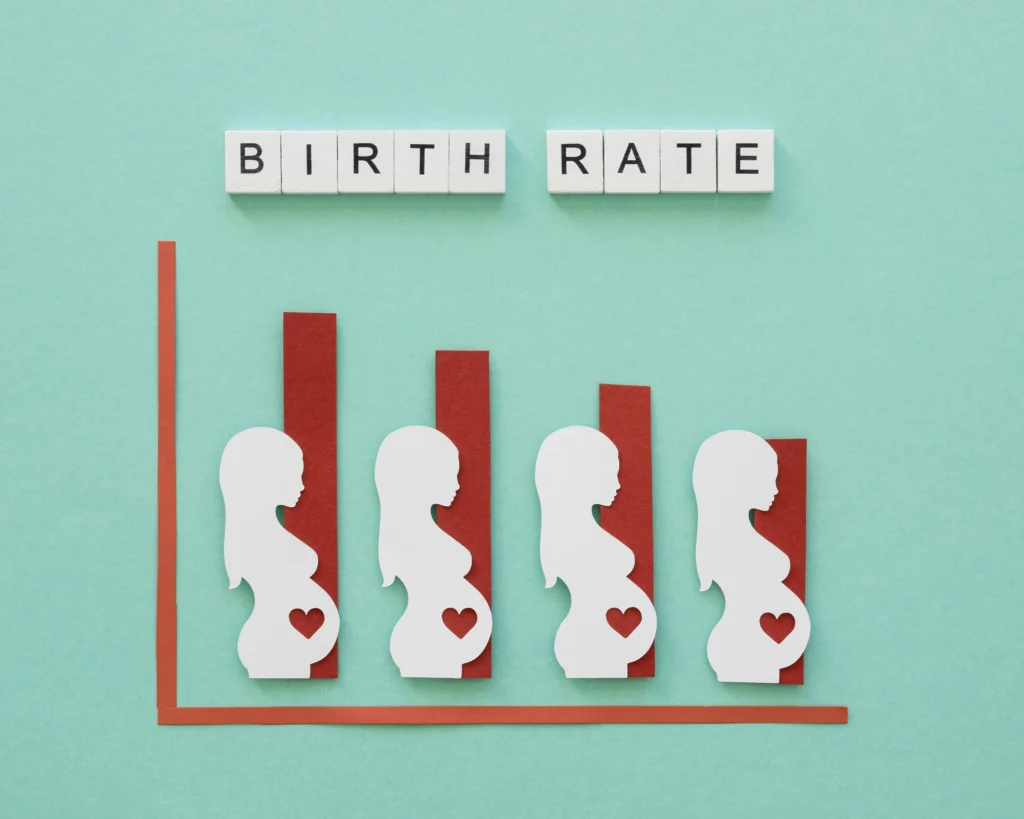(The World Population) As of mid-2025, the world’s population has reached a staggering 8.2 billion people — a milestone that reflects not just growth, but transformation. For centuries, population trends were shaped by high birth rates and improving survival. But today, we stand at the edge of a new demographic era. While some regions continue to expand rapidly, others are seeing stagnation or even decline. These contrasting trends are giving rise to major social, economic, and environmental implications.
From aging populations and shrinking labor forces to rapid urbanization and growing youth demographics in developing regions, the state of the world’s population is more complex — and more important — than ever. Understanding where we are, and where we’re going, is critical to shaping the future of our planet.

Slower Growth, Lower Birth Rates: A Turning Point in Human History
For decades, global population growth was exponential. Now, that growth is decelerating. The average global fertility rate — the number of children born per woman — has declined significantly and now sits just above replacement level. In many developed nations, it’s fallen below that line.
This slowing growth signals a major demographic shift. Countries that once struggled with overpopulation are now grappling with falling birth rates and aging citizens. In places like Japan, South Korea, Germany, and Italy, natural population decline (more deaths than births) is already underway. Even in populous countries like China, growth has sharply declined due to changing societal norms, economic pressures, and delayed family formation.
While population stabilization may sound like a relief in the face of climate concerns, it brings new challenges. Shrinking populations can mean shrinking economies, workforce shortages, and increased burdens on healthcare and social systems
Aging Societies: The Rise of the Elder Majority
One of the most dramatic population changes is the rise of aging populations. Around the world, people are living longer due to medical advancements, improved nutrition, and better quality of life. But longer life expectancy coupled with fewer births is creating societies where older adults outnumber younger generations.
This is especially true in Europe, North America, and parts of Asia. By 2050, it’s estimated that more than 1 in 6 people globally will be over the age of 65. That’s a significant demographic shift that has profound implications for governments, businesses, and families.
Healthcare systems are already feeling the pressure. Demand for elder care, retirement support, and chronic disease management is skyrocketing. Pension systems in many countries are at risk, with fewer workers supporting growing numbers of retirees. At the same time, older adults remain an untapped resource — many are healthy, skilled, and capable of contributing to society if policies and attitudes adapt accordingly.

Regional Imbalance: Youthful Growth in Africa, Decline Elsewhere
While some countries are aging and shrinking, others are booming. Africa is now home to more than 1.5 billion people, with high birth rates and a young population driving growth. In fact, by 2050, one in four people on Earth is expected to be African. Nigeria alone is on track to become the third most populous country, after India and China.
South Asia — particularly India — continues to have strong population numbers as well, although growth is slowing. These regions face a dual challenge: managing rapid population expansion while also addressing poverty, infrastructure gaps, and educational needs.
If properly managed, this youth-driven population boom could become a major economic advantage — what economists call the demographic dividend. But without adequate investments in education, healthcare, jobs, and governance, these populations could face rising unemployment, migration, and instability.
Urbanization and Sustainability: The Cities of Tomorrow
As global population patterns evolve, so do our living environments. In 2025, over 56% of the world’s population lives in urban areas, and that number continues to rise. Cities are becoming the epicenters of growth, opportunity — and challenge.
From mega-cities like Lagos, São Paulo, and Mumbai to fast-growing hubs in Southeast Asia and sub-Saharan Africa, urban areas are expanding at record speed. With that comes a strain on housing, transportation, sanitation, and natural resources. Informal settlements, pollution, and overcrowding are critical issues that must be addressed.
Yet urbanization also presents unique opportunities. Well-designed cities can be more efficient, more sustainable, and more equitable than rural sprawl. The key lies in thoughtful urban planning, investment in public infrastructure, and policies that promote inclusivity and resilience.
The future of global living is urban — and how we shape our cities will directly impact our ability to meet global goals like climate sustainability, economic growth, and human well-being.

A Planet in Transition
The world population is not just a number — it’s a story of change, of progress, and of future possibility. While global numbers continue to rise, growth is uneven, and the challenges we face are nuanced. Some countries are preparing for fewer people, others for many more. Some are investing in aging care, others in youth development.
What unites us all is the need for forward-thinking solutions. From empowering women and supporting families, to reimagining work, aging, and sustainable living — the population trends of today will define the possibilities of tomorrow.
Table of Contents
Did Ozzy Osbourne Die? The Truth Behind the Rumors – trendsfocus
World Population Clock: 8.2 Billion People (LIVE, 2025) – Worldometer (worldometers.info)